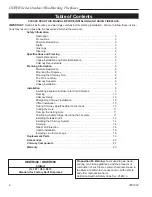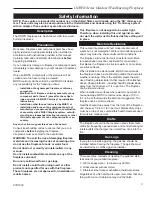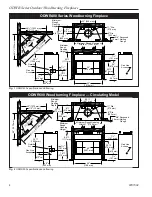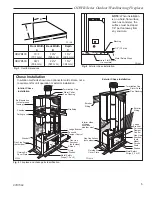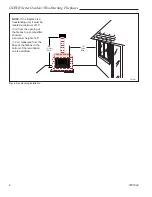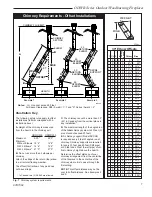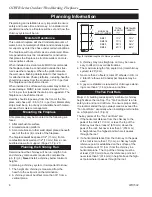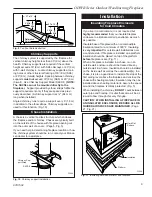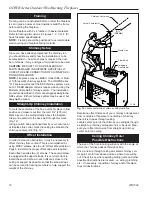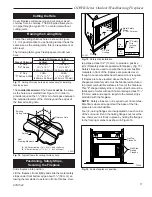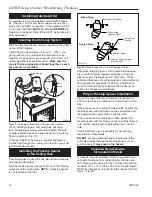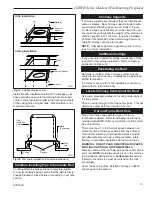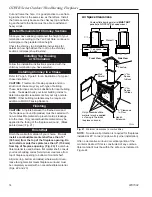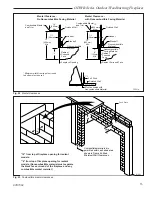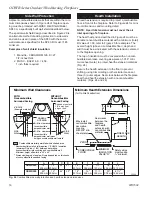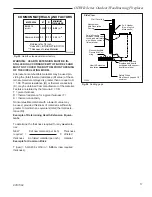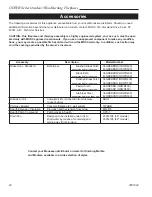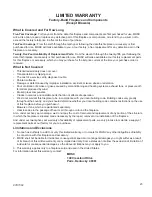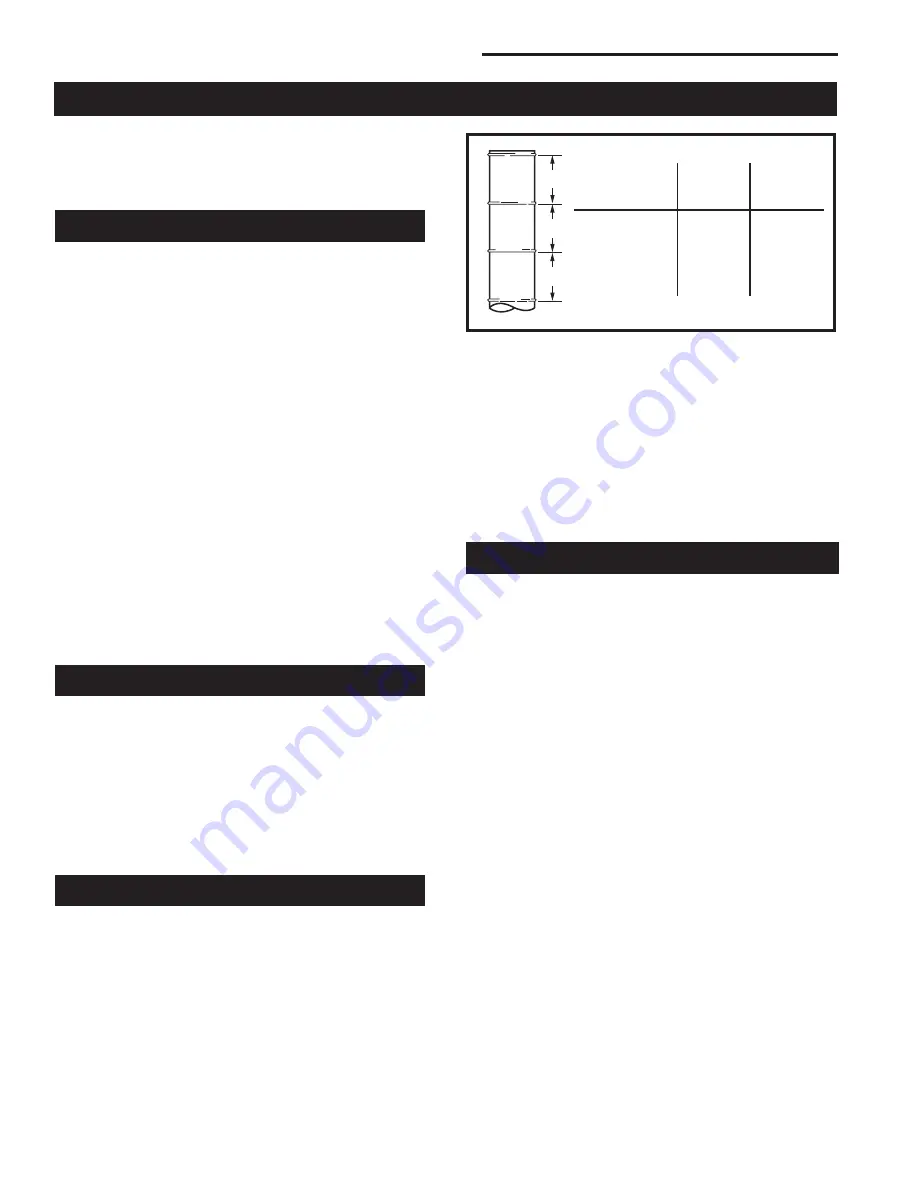
8
ODWR Series Outdoor Woodburning Fireplaces
87D1502
Planning Information
Preplanning an installation is very important to ensure
safety and to save time and money. An installer must
predetermine where a fireplace will be set and how the
chimney system will be run.
Moisture Resistance
This outdoor fireplace will shed moderate amounts of
water, but is not waterproof. Water and condensing wa-
ter vapor may enter the chase under certain conditions.
The fireplace will not perform as an exterior wall. Mois-
ture penetration must be considered for construction
that places the fireplace in structure walls or on mois-
ture sensitive surfaces.
When installed on exterior walls: MHSC recommends
the fireplace chase be constructed outside the struc-
ture's weather envelope. Where the platform meets
the wall, use a flashing detail similar to that required
for attached decks. Chase platforms, including hearths
should slope away from the structure at 1/4 in per foot.
The fireplace can be shimmed level.
When installed on surfaces where water may collect or
cause damage: MHSC recommends a slope of 1/8 in
to 1/4 in per foot towards the drain port suggested. The
fireplace can be shimmed level.
Hearths should slope away from the front of the fire-
place and chase at 1/8 in to 1/4 in per foot. Metal safety
strips must be on top of any combustible hearth materi-
als used for moisture management.
Mounting the Fireplace
A fireplace may only be mounted on the following sur-
faces:
1. A flat combustible surface.
2. A raised wooden platform.
3. A concrete block or other solid object placed beneath
each of the four (4) corners of the fireplace.
The fireplace
must
be spaced 1/2" (13 mm) from a
combustible back wall and 1/2" (13 mm) from a com-
bustible side wall or support. (Page 21, Fig. 21)
Planning the Chimney Run
Determine how the chimney will be run, length of run
and chimney components required to complete the
job. (Fig. 6)
Never
install a chimney below minimum
heights.
In planning a chimney system, it is important to know:
1. The height of a chimney is measured from the
hearth to the exit point on the termination.
2. A chimney cannot be offset more than 30° from a
vertical plane.
3. A chimney may run straight up or it may be neces-
sary to offset it to avoid obstructions.
4. The maximum length of an angled run (total chimney
system) is 20' (6 m).
5. No more than 2 offsets (4 total 30° elbows in U.S./or
2 total 45° elbows in Canada) per fireplace may be
used.
6. A guy wire stabilizer is required for chimneys extend-
ing more than 6' (1.8 m) above a roof line.
The Ten Foot Rule
Major U.S. building codes specify a minimum chimney
height above the roof top. The “Ten Foot Rule” is a fire
safety rule and not a draft rule. To ensure proper draft,
it is recommended that you always meet or exceed the
“Ten Foot Rule,” especially when installing a termination
on a high pitch roof. (Fig. 9)
The key points of the "Ten Foot Rule" are:
1. If the horizontal distance from the chimney to the
peak of the roof is 10' (3 m) or less, the top of the
chimney must be at least 2' (610 mm) above the
peak of the roof, but never less than 3' (914 mm)
in height above the highest point where it passes
through the roof.
2. If a horizontal distance from the chimney to the peak
of the roof is more than 10' (3 m), a chimney height
reference point is established on the surface of the
roof a distance of 10' (3 m) from the chimney in a
horizontal plane. The top of the chimney must be
at least 2' (610 mm) above the reference point, but
never less than 3' (614 mm) in height above the high-
est point where it passes through the roof.
L1
L1
LT
MODEL SK
2 WALL CHIMNEY
TOTAL
LENGTH
(LT)
INSTALLED
LENGTH
(L1)
SK81
SK818
SK83
SK84
11
56O
"
17
56O
"
35
56O
"
47
56O
"
10
56O
"
16
56O
"
34
56O
"
46
56O
"
FP288
MBUF-INSTALLED LENGTH
6/17/96
Fig. 8
Installed lengths of chimney sections.
WF288


